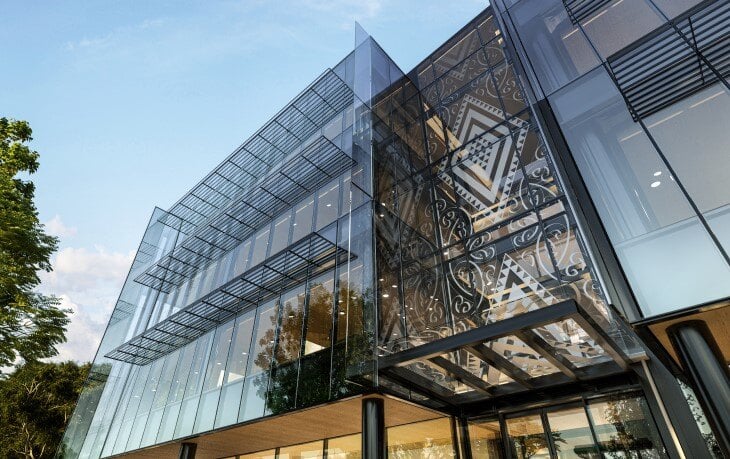What’s new in our most ambitious Homestar version yet? There are some big changes with V5 at a crucial time. If we're to create a zero carbon future and meet our climate change targets we have to ensure our homes are playing their part.
To help give an overview of the major changes to Homestar and the exciting new tools and calculators we’ve introduced, we’ve hosted a webinar with Homestar Manager Danidu Wijekoon and our Business Development Manager of Residential, Matthew Cutler-Welsh.
We received a bunch of great questions that unfortunately we didn’t have time to cover on the day. See below for more answers and details about the latest version
How does Homestar help ensure healthy homes can be built affordably?
Housing affordability is a hugely important topic in New Zealand, particularly because our most vulnerable are often those left living in poor quality housing. We want everyone to be able to live in warm, dry and healthy homes.
1. Homestar encourages the design and construction of homes that are cost effective to operate. Our new ECCHO calculator will help estimate the ongoing energy costs of operating a Homestar home. This is a great way to assess the benefits of upgrading some of the most important components and systems.
2. One of the best ways to reduce building costs is to reduce the size of the home. Homestar encourages good design and efficient use of space, allowing more of the budget to be spent on the products and systems that impact performance.
3. ANZ and ASB both offer favourable mortgage rates for Homestar registered projects. This is another great way to help make buying a home more accessible.
See our website for more analysis on the costs of building to previous versions of Homestar.
Has any analysis been done between regions on what the cost implications are?
A limited number of projects have been analysed during the pilot phase of the Homestar V5 development. These initial pilot projects confirmed some changes to the way homes are designed and built such as higher quality windows and ventilation. Not all aspects of higher performance homes require additional or more expensive products. For example, thermal bridging and excessive floor area can be reduced with good design.
There are cost benefit studies available of previous versions of Homestar. As the uptake of Homestar progresses we will gain a better picture of the cost implications and how they differ between regions.
How do the improvements work with the proposed regulatory changes to building standards?
The sector has an increasing awareness of healthier lower carbon homes; thousands of homes are being built to 6 Homestar, better design is increasingly understood and the H1 building code changes will result in higher levels of insulation across the country for all homes being built from late in the calendar year 2022. As such the NZGBC felt it was important to take the sector to the next level and launch a standard (Homestar v5) which takes home design and building to the next level on health and lower operational and embodied carbon.
We have aligned Homestar V5 with the progressively higher performance targets indicated by MBIE’s Climate Change Framework and the proposed updates to Clause H1 of the building code.
We have a good working relationship with MBIE and we are confident that aiming higher up the Homestar scale is a great way for designers and builders to stay ahead of the curve and be prepared for a market that expects and demands healthy, comfortable, energy efficient and low carbon homes.
Separating waste for the Homestar 6 requirements can be hard in the regions with waste depots unable to separate waste or provide the required documentation. Is this something that is being looked at?
We recognise and acknowledge that waste management is difficult, particularly in certain regions around Aotearoa New Zealand. Fortunately, there appears to be progress and growing facility to deal with construction and demolition waste in the regions
Tools like Homestar help to change the industry by incentivising designers and builders to find new solutions. Sometimes this requires lobbying and working with councils or other service providers, which we and our partners are doing. We also work with providers to see how they could realistically meet the intent of Homestar in this space.
The best way to deal with waste is to design it out in the first place. Half of the Homestar V5 points in the construction waste category are allocated to waste elimination, rather than diversion.
It appears an unfortunate side effect of the scoring system using kWhr/yr/m2 is that smaller homes will find it more difficult to achieve compliance as their energy consumption is divided by less floor area. Would it be better to use something like kWhr/yr/bedroom or some other way of not penalising smaller more compact homes?
It is true that there are some design challenges for smaller buildings. When the energy use is more condensed over a smaller floor area, it could potentially be harder to achieve kWh/m2/yr thresholds. However, this is offset by the reduction in resource use, overall cost and total energy consumption of a smaller dwelling.
Annual energy per floor area (e.g. kWh/m2/yr) is an established and very fair metric of comparing the relative energy efficiency of buildings and is used as one of the main performance criteria in Passive House.
As part of sustainability measures, does Homestar V5 considers designing homes with particular climate change risk/adaptation measures?
There are currently no explicit climate change risk or adaptation measures recognised in a Homestar credit. However, designing and constructing the best thermal envelope is one of the best ways of insulating against the likely effects of increasingly severe weather events, including warmer summers.
Resilience is also closely related to sustainability. Energy and water efficiency coupled with solar generation and rainwater harvesting are rewarded in Homestar and are both good measures for improving resilience against extreme weather.
Do you have embodied carbon figures for all building materials used?
The Homestar Embodied Carbon Calculator (HECC) has been released with current data available from industry and supplied by BRANZ. The NZGBC and BRANZ welcome the addition of more product data as it becomes available. Please contact us for more information.
Carbon footprint data used to calculate whole-of-life embodied carbon impacts should be taken from datasets in compliance with EN 15804 and, if possible, geographically relevant. Currently available tools that may be used include:
- Homestar Embodied Carbon Calculator
- LCAQuick
- ETool LCD
NZGBC will periodically update the list of acceptable tools on the NZGBC website.
In addition, BRANZ publishes a dataset of embodied carbon for materials called BRANZ CO2NSTRUCT
I’m already an assessor, do I need to do more training?
Homestar V5 includes significant changes and additional tools. Existing Practitioners and Assessors will be required to do Homestar V5 training. Discounted rates for training courses are available for existing Homestar Practitioners and Assessors.
For information on training includes course dates and fees here.
Can we also expect changes to Green Star in the near future?
NZGBC is currently working on Green Star v1.1 and more information will be available shortly.
Have a question? Get in touch with the Homestar team



